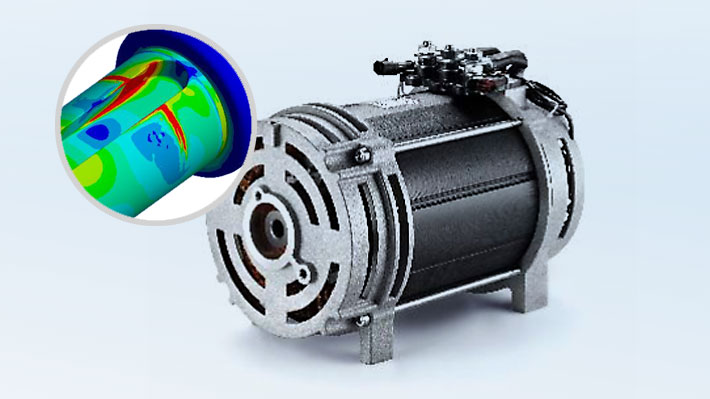SBB and partner develop new automatic wagon coupler
Innovative spirit with tradition and a future
Automation does not stop at the Swiss Federal Railways (SBB). Therefore, the coupling of wagons, especially in freight transport, should be made more efficient through the use of automatic couplers. With this in mind, SBB engineers in Bellinzona developed an automatic retrofit coupler that is easy to integrate and safe to use.
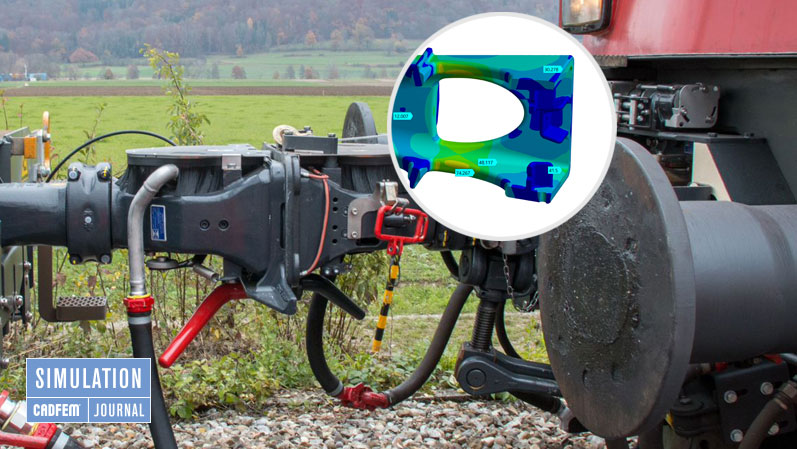
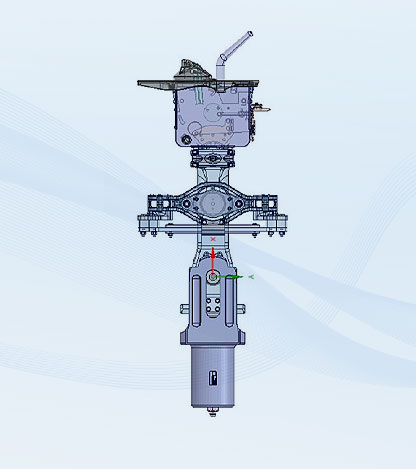
The Bellinzona industrial plant of the SBB has existed since 1889 and is strongly anchored in the Ticino identity. This was demonstrated around 15 years ago when the workforce - with a great deal of solidarity from the local population - went on strike for 33 days (rather unusual for Switzerland) in order to prevent the SBB's plans for cutbacks in Bellinzona. Today, the future of the plant is a done deal: In a few years, the most modern railroad workshop in Europe will be inaugurated in Bellinzona, a new building project with an investment sum of 360 million Swiss francs.
Modernization through automatic couplers
In 2016, the development of the automatic coupler for flat freight cars was part of a larger modernization project at SBB aimed at increasing efficiency and safety. Roger Bertolaso, Head of Mechanical Engineering in the Operating Maintenance division at SBB in Bellinzona, reports, “the automatic coupler in conjunction with the automatic brake test is the basis of future so-called ‘one-man shunting operations’. This will speed things up, and accidents should be avoided. Today, at least two people are needed. The shunting supervisor couples or uncouples the cars and monitors the brakes during the brake test, while the shunting locomotive driver carries out the shunting supervisor's commands on the locomotive. In the future, this should be possible to handle with only one person.”
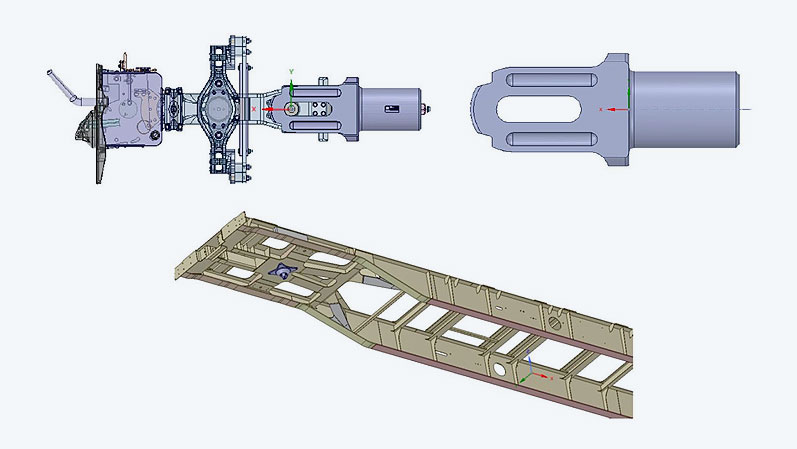
Sensors and cameras detect the space in front of the locomotive during maneuvering and give acoustic and visual warnings of obstacles. The operator of the maneuver is located near the train and controls it with a remote control. The particular challenge in developing the automatic couplers was that neither the locomotives nor the flat freight cars were designed for an increased load on the coupler. Normally, the compressive forces are not transmitted in the middle of the locomotives and wagons, but rather at the sides via the buffers. For this reason, the development of the first automatic coupler was limited to flat freight cars and selected locomotives for which both the static forces and the material fatigue could be kept within acceptable limits.
Support from computation specialists
“Since these high tech challenges were not necessarily commonplace for our SBB team, we sought engineering support from the Ticino-based design and calculation specialists at SAECON,” explains Roger Bertolaso. “The company was founded in 2014 by Davide Valtorta in Montagnola, whom we had gotten to know as a competent simulation expert when he was still working for CADFEM Suisse AG. Here we felt that we were in good hands, because in addition to the structural-mechanical load aspects, technical and economic criteria are also very important to us. This is because we pay attention to the simplicity of the design, which should be easy to assemble and function without problems so that the conversion costs can be kept low.” For historical reasons, freight cars are already equipped with a space in their frame that is geometrically suitable for accommodating an automatic coupler, but which does not include any devices for transmitting forces to the frame itself. Therefore, it was necessary to structurally analyze the corresponding elements. This concerned, among other things, the load transmission system in the frame, the welds connecting the coupling system to the frame, and the vehicle chassis including the welds.
Roger Bertolaso, Head of Mechanical Engineering at SBB in BellinzonaSimulation provides us with a tool that allows us to look deep into the structures of railcar designs.
Earlier concepts were not feasible
The idea of automating couplers is not new. It was already being considered in the 1970s and initial attempts were made. However, it was concluded that retrofitting freight cars with automatic couplers would not be possible at an acceptable cost. SGNSS cars were selected for the current automation project, flat freight cars about 20 meters long and about 3.5 meters wide, designed to carry 60-foot-long containers with a maximum load capacity of 70 tons. Because the rail industry is highly regulated, various guidelines must be followed. For example, the EN 12663 standard “railway applications - Static requirements for railroad vehicles” must be taken into account for impacts on railroad vehicles. Here, the case was analyzed in which a compression load is not inserted laterally via the buffers, but rather centrally in the frame. The structural analyses carried out for this purpose concern both the static case, considered as an exceptional load, and the “fatigue case”, which was defined on the basis of a load spectrum. The load used for the static test is 1725 kN.
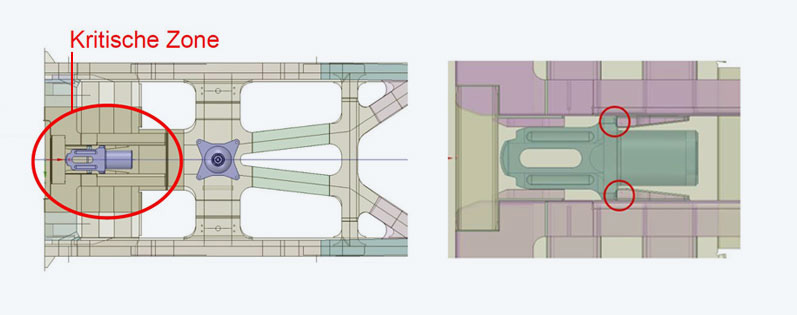
FKM guideline is the basis for the nominal stress concept
An important foundation used by SBB engineers for calculations is the general FKM (Forschungskuratorium Maschinenbau) guideline for structural testing of mechanical components. This is suitable for various metallic materials such as steel, aluminum and cast iron. With the FKM guideline, a nominal stress concept can also be calculated wonderfully simply, even manually, for welds, as well as for simple geometries. If it is a bit more complex and a large number of welds have to be taken into account, then it becomes too complicated for manual calculations and the engineers prefer powerful calculation software. “Our CAD-integrated FEM program was no longer sufficient,” explains Roger Bertolaso. “We also lacked the expertise needed for such safety-critical calculations. That's why we commissioned the specialists from SAECON. Davide Valtorta and his colleagues had extensive experience in this area and also had the appropriate software tool at hand, FKM inside Ansys. This allows the degree of utilization of the material and the weld seams to be determined automatically and quickly, even for very complex geometries.”
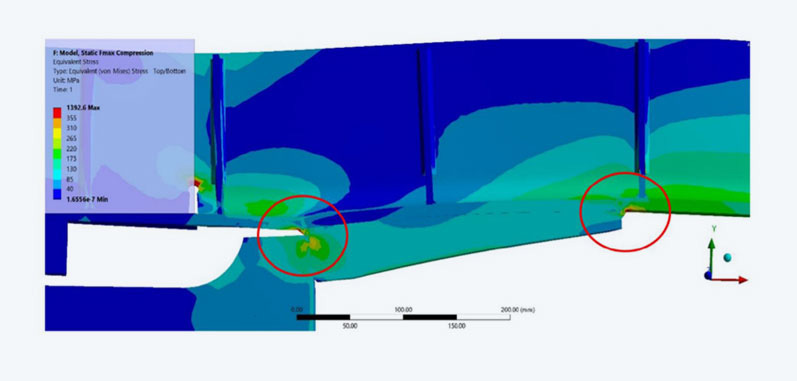

“Technical solutions should always be as simple as possible,” emphasizes Davide Valtorta. “That's why we first examined a variant with a pressure stop in greater detail. In this case, the forces acting on the welded steel structure and on the weld seams were too high, resulting in a load factor of over 150 percent. Even the modifications that had been considered did not provide a satisfactory solution, partly because of the difficulty of welding under the freight car. We therefore had to discard the pressure stop variant.”
Joint optimization of the spacer variant
The recommendation of an SBB supplier called the spacer variant, which also consisted of a simple design with two welded-in plates, was then analyzed with FKM inside Ansys. The calculations showed very clearly that the load factor in the spacer would far exceed the acceptable limits. The same was also observed in the railcar frame - the load-bearing structure for the underframe.
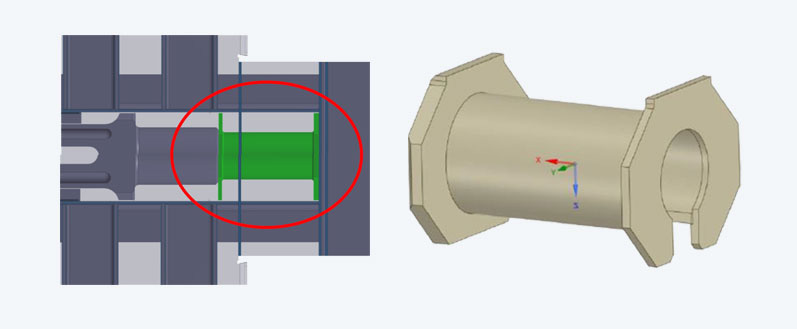
“Since the spacer variant clearly represented the better concept for us, we decided to optimize this first design step by step together with SAECON,” explains Roger Bertolaso about the process. The main focus was on optimizing the introduction of the forces into the undercarriage of the railcar, but also on several other detailed improvements, so that in the end an easy-to-use solution with a casting as a spacer for the automatic coupler was created. The shape-optimized geometry diverts the forces from the inside into the side areas of the frame in order to distribute the loads more evenly. The changes in geometry also led to a reduction in stress asymmetries caused by eccentric force application.

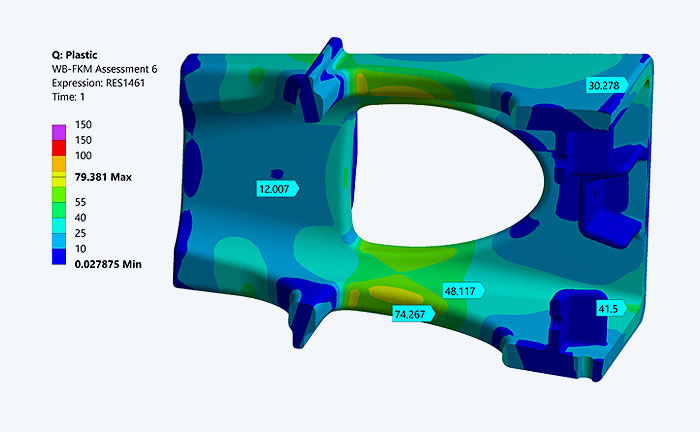
The new automatic coupler could then be tested in practice and was gradually installed in over 50 flat freight cars and around a dozen locomotives and extensively tested. The results were convincing, which prompted the start of an extensive retrofit of flat freight cars and locomotives. “We were thus able to successfully complete a significant contribution to the automation of the train compositions,” reports Roger Bertolaso proudly.
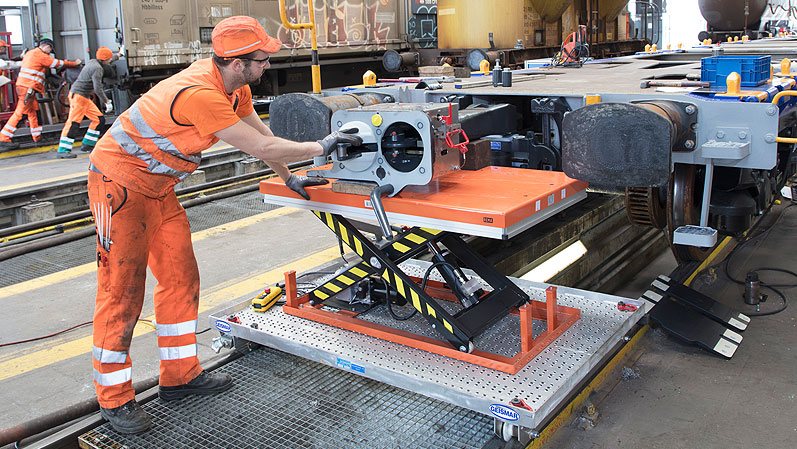
Simulation can convince all parties involved
The focus of the activities was not only on time and cost savings, but also on avoiding accidents with material damage or even personal injury. “Simulation provides us with a tool that allows us to look deep into the structures of railcar designs,” explains the SBB engineer. “We were thus able to convince other parties involved, because the images of the simulation results speak much louder than words. In particular, those involved without in-depth technical know-how recognized the advantages of the selected variant, as we clearly illustrated the stress-critical points and their mitigation with the images of the simulation results.”
Roger Bertolaso, Head of Mechanical Engineering at SBB in BellinzonaWith the images of the simulation results, we were able to clearly illustrate the advantages of the selected variant even to those involved without in-depth technical know-how.
Davide Valtorta of SAECON adds, “for us, this was the first engineering project with SBB. This was followed by many other projects with SBB - for example in Oyten and Zurich - where we demonstrated the benefits of numerical simulations in various engineering areas.”

Schweizerische Bundesbahnen AG
www.sbb.ch
Roger Bertolaso,
Head of Mechanical Engineering at SBB in Bellinzona
Author: Gerhard Friederici (CADFEM Germany)
Images: © SBB, SAECON
Published: January, 2023
Contact CADFEM



